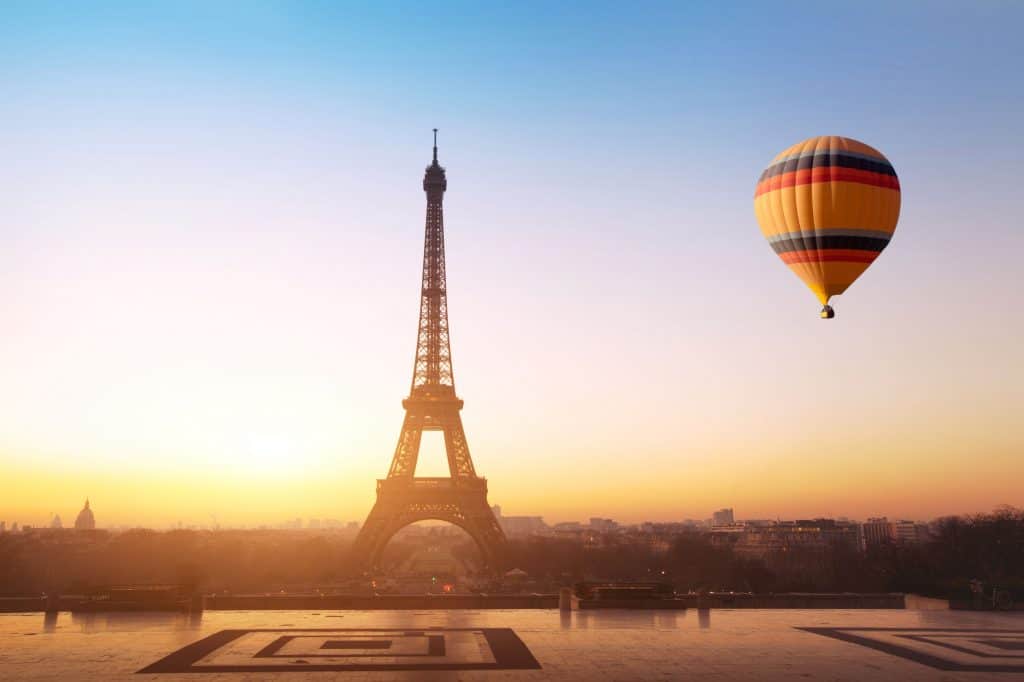
The hot air balloon is the earliest flying device in history. Man soared above the clouds in the basket of a hot air balloon long before Wright brothers were even born!
While there were several early forms of what would eventually become the hot air balloon, the first actual hot air balloon was invented in 1783. This primitive hot air balloon design was abandoned shortly thereafter, and the first modern hot air balloon was invented in 1960.
It seems that man has always dreamed of soaring far above the earth. The history of hot air balloons is also the story of that dream coming true.
Hot Air History
Studying the history of humanity is like studying building blocks. Each generation makes contributions and discoveries that the next generation builds on.
The invention of the hot air balloon follows this model exactly. There were advances in hot air balloon like technology as early as 200 AD.
The whole story of inventing the hot air balloon can only be seen by tracing the contributions of many civilizations.
The Nazca Lines
The earliest possible indications of hot air balloon like technology dates all the way back to the ancient Nazca civilization. It is theorized by some that these ancient people used hot air balloons to create the Nazca lines.
If you don’t know what the Nazca lines are, they’re massive geoglyphs etched into the ground in Peru. These etchings are made up of lines that are about six inches deep, up to six feet wide, and make designs that can cover over half a mile.
The purpose of these geoglyphs, who created them, and how they were created is widely debated.
Jim Woodman, an American explorer, has theorized that these geoglyphs were made using primitive hot air balloons. Woodman argues that the only way to observe the development of these lines is from the sky.
He even claims that ancient pottery proves that the Nazca people used hot air balloons in their burial rites.
The hot air balloon/ Nazca line theory has been widely discredited. I’ll leave that decision up to you. Still, if Woodman is correct, these ancient hot air balloons would predate other hot air technology by several hundred years.
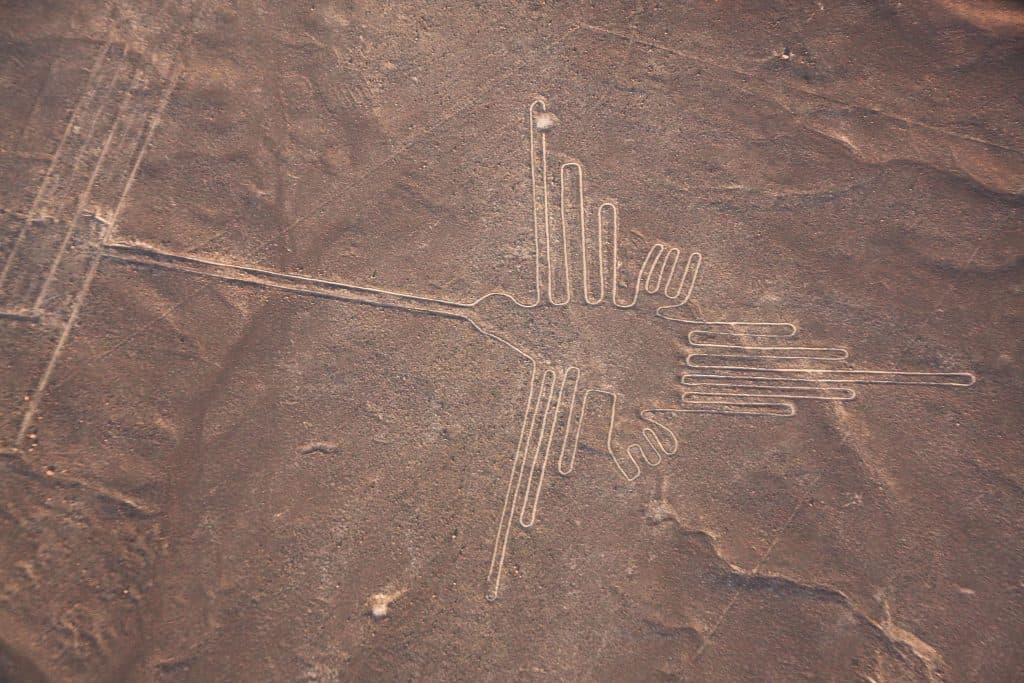
Chinese Lanterns
The earliest documented hot air balloon technology comes from ancient China. Beginning sometime shortly after 200 AD, the Chinese began using flying lanterns as a part of their military operations and other cultural celebrations.
These lanterns are powered by the same science behind hot air balloons. They achieve buoyancy by trapping hot air in their paper frame.
These lanterns, although small, are the first evidence on humanity using hot air to achieve flight. While they were never used to carry humans, they still represent a huge step forward in science.
Today, Chinese lanterns are used for many different celebrations in China and other parts of the world.
Bartolomeu de Gusmão
The next step forward in hot air technology came over a thousand years later.
Bartolomeu de Gusmão was a Jesuit priest from a Portuguese colony in Brazil. His research in hot air technology was groundbreaking!
Gusmão developed a model very similar to later hot air balloons. It was small but still impressive. In 1709, He demonstrated his discovery in front of King John V, the king of Portugal. His demonstration was a success!
Unfortunately, Gusmão would later be persecuted by the Inquisition. This put a stop to his research.
Gusmão never completed his plans for a hot air balloon large enough to carry passengers. It is likely that he would have been successful were it not for the opposition he faced.
The Enlightenment
In stark contrast to the close-minded persecution Gusmão faced, there would soon be an age of enlightenment throughout Europe.
The enlightenment was a revolution of sorts: a revolution of ideas. In this time period, philosophy and science saw some of their greatest achievements.
Although there is no way to definitively to say how much time the enlightenment covered, many historians define this time spreading from the rule of King Louis XV to the French Revolution. In years, that’s from 1715 to 1789.
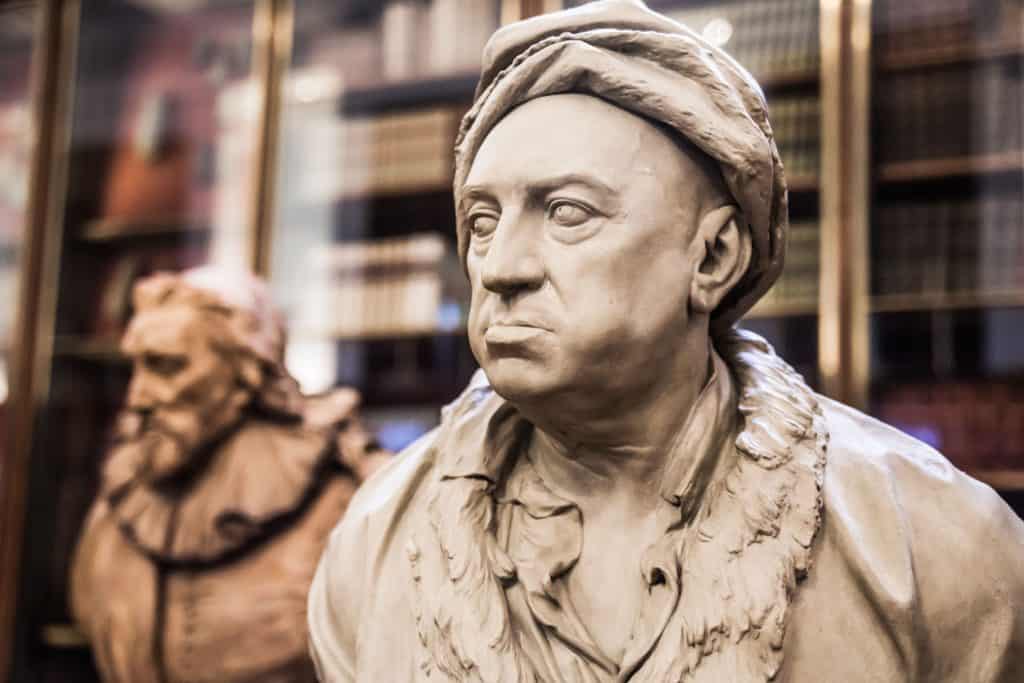
Developments in Flight
There were many inventions that come in the enlightenment period, but some of the most exciting come from developments made in flight.
Up to this point in history, no one had ever invented a way to safely and consistently achieve manned flight. This was one of the exciting fields of research undertaken during the enlightenment.
Previous work with man-carrying kites had been done in Asia and by Leonardo da Vinci, but this was not true flight. It was more like controlled falling.
Even with the invention of the parachute, man was still many steps away from rising off the ground and traveling into the sky.
It was not until the discovery of lighter than air gases that true progress was made into this field.
Lighter than Air Gas
Although many scientists experienced hydrogen, the discovery and documentation of hydrogen usually go to Henry Cavendish.
Cavendish was an English chemist and enlightenment thinker. His discovery of hydrogen in 1766 sparked excitement in the field of potential flight.
Hydrogen gas is lighter than oxygen molecules and therefore rises. If enough hydrogen could be trapped within a container, the buoyancy created by the lighter gas inside would lift the container.
This was a major step towards achieving manned flight in the enlightenment period.
The First Hot Air Balloon
At the beginning of the 1780s, the stage was right for the invention of the hot air balloon. Two brothers in southern France, Joseph and Étienne Montgolfier, began work on the first hot air balloon in 1782.
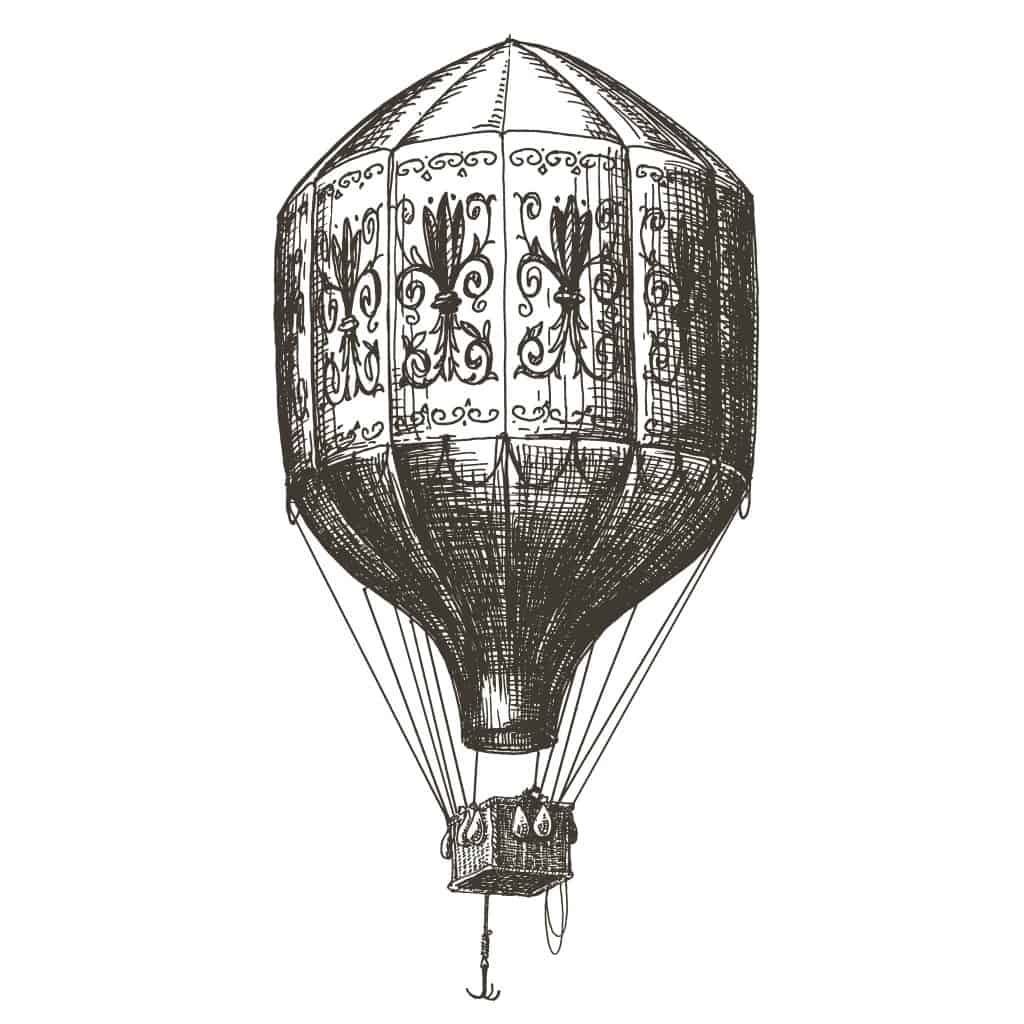
The Montgolfier Brothers
Joseph and Étienne Montgolfier were sons of a very successful paper manufacturer. Joseph was much more thoughtful while Étienne would go on to carry the family business to great heights.
Together, they had many great ideas. From vellum to work on parachutes, the two were great at coming up with new inventions.
Of all their inventions, these brothers are best known today for their invention of the hot air balloon. Having experimented with lighter than air gases, they were interested in achieving manned flight.
In late 1782, Joseph would come to his brother with the idea for a new machine: the hot air balloon.
Early Tests
The Montgolfier brothers created their first model in the summer of 1783. Their first balloon weighed over 500lbs. and was made out of sackcloth. It was unmanned, but it did achieve flight!
This first test was done in the presence of only a handful of dignitaries, but news of its success grew rapidly. The Montgolfier brothers wanted greater recognition, so they took their tests to Paris!
In Paris, their fame grew as they had more demonstrations. However, they still hadn’t been able to devise a way to carry a man into the air.
Help and Success
It was in Paris that Étienne recruited the help of Jean-Baptiste Réveillon. Réveillon was a wallpaper manufacturer who had several ideas for how to achieve manned flight.
With the help of Réveillon and more tests in a suburb of Paris, the hot air balloon was ready for passengers!
On September 19, 1783, the first hot air balloon with passengers took to the skies. The passengers happened to be a sheep, a duck, and a rooster.
Shortly thereafter, on November 21, 1783, the first manned flight in a hot air balloon took place! The pilot was Pilâtre de Rozier who brought François Laurent le Vieux d’Arlandes with him.
The balloon, built by the Montgolfier brothers and piloted by Pilâtre, flew for 25 minutes and traveled five and a half miles!

Earliest Reception
Even with the enlightenment period, the 1780s were still a superstitious time. Although the hot air balloon was widely received with excitement, there were many who feared the invention.
The Sky is Falling!
When Pilâtre and d’Arlandes landed, it’s said that they were attacked by frightened farmers!
The story goes that farmers rushed forward after the balloon landed poised to attack this strange device. Some apparently even believed it was the moon falling from the sky!
To appease the frightened farmers, Pilâtre and d’Arlandes offered them champagne. This has given birth to a tradition of drinking champagne after a successful hot air balloon ride!
Today we may laugh at these villagers, but some apprehension for these early hot air balloons is certainly merited.

Early Confusion and Disaster
While we understand the laws surrounding what makes a hot air balloon fly today, early scientists did not. This lead to sub-optimal performance and even death!
Joseph Montgolfier thought that it was the smoke from the fire that caused the balloon to lift. Although there was some early work on atoms and molecules, scientists of the day did not understand it was the heated oxygen that helped the balloon rise.
Because of this, the Montgolfier brothers used wet kindling to create smoke in the envelope of their hot air balloons. In reality, this just made the air in the envelope heat up more slowly.
In June of 1785, Pilâtre de Rozier, the pilot of the first manned hot air balloon, died while crossing the English Channel. He was using a balloon that used a combination of hot air and hydrogen.
The balloon exploded.
Soon after these early achievements with the hot air balloon, the gas balloon was invented and became much more popular. These balloons used hydrogen or helium trapped in a balloon to achieve flight.
A Century of Development
It would be over 100 years until the hot air balloon came back into favor. In the meantime, many discoveries were made that would eventually give rise to the modern hot air balloon.
Oxygen and Buoyancy
The first discovery that helped hot air balloons come back was a better understanding of oxygen molecules.
Scientists came to understand how oxygen molecules behaved when heated. This insight greatly changed the way hot air balloons were understood.
Instead of smoke being what caused the balloon to lift, it was the heated oxygen molecules that raised the balloon. This development was huge.
As oxygen molecules become heated, they become less dense. As the oxygen inside the envelope of a hot air balloon becomes less dense than the air outside of the envelope, the balloon begins to rise.
In layman terms, hot air rises. If you can trap a lot of hot air, it can lift a lot of stuff.
This discovery meant that smoke was no longer used to try and lift a hot air balloon.
Liquid Propane Burner
Along with these insights into molecular behavior, a safer way to heat the oxygen inside a balloon’s envelope presented itself.
The liquid propane burner created a safe and reliable way to heat the oxygen inside a hot air balloon. Not only did the liquid propane burner make this process safer and more reliable, it also made the process faster.
Liquid propane burners also meant that the fuel needed for flight could be carried in the hot air balloon. Propane tanks can be carried in the basket, or strapped to the outside of the basket.
Propane became a popular way to heat camp stoves, heat furnaces, power irrigation pumps, and fuel many other devices.
Even with these advancements in science and technology, someone had to connect all of the dots before hot air balloons could return to popular use.
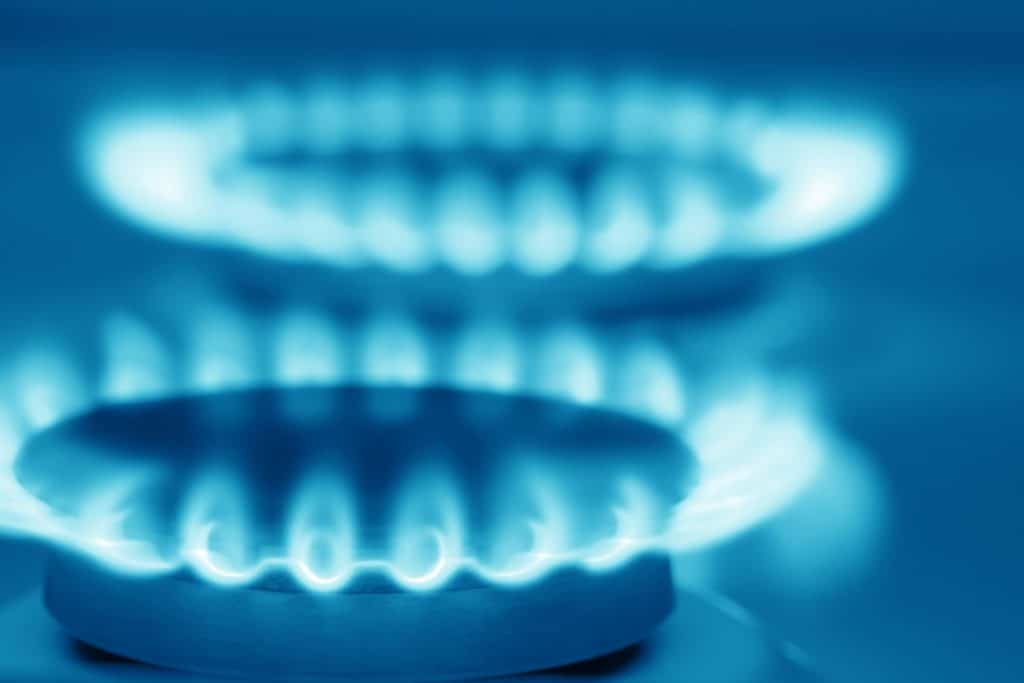
The Modern Hot Air Balloon
The person to finally connect all of the dots (and add some dots of his own) was Ed Yost.
Ed Yost was a senior engineer for General Mills and the inventor of the modern day hot air balloon. His inventions did more than revive the hot air balloons of old, they gave rise to a new kind of hot air balloon.
Further Innovation
While many inventions helped Yost to invent the modern-day hot air balloon, he would need some inventions of his own.
When Yost became interested in hot air ballooning, there was no one else in that field. Any ballooning that did happen was gas ballooning. It was very expensive at the time, and couldn’t achieve great elevation.
Because of this, Yost was in a class of his own.
By the time Yost was finished with his work, he would hold 26 patents related to the hot air balloon. These inventions included inflation mechanisms, maneuvering vents, and many different balloon designs.
These innovations transformed the technology the Montgolfier brothers worked on so long ago into a modern-day flying machine.
First Flight for the Second Time
Yost had an unsuccessful test in October of 1955. This failure ended up being invaluable in the long run because it exposed many issues with older balloon models.
It was in October of 1960 the Yost had his first successful flight. Strapped to a small seat, he soared above Bruning, Nebraska for an hour and a half. This triumph brought ballooning into the modern age!
Yost would become the first inductee into the National Ballooning Hall of Fame in 2003 for his invention of the modern hot air balloon.
Today, the common hot air balloon design is called a Montgolfier balloon. This is done in tribute to the Montgolfier brothers who did, in fact, create the first working hot air balloon back in 1783.
However, credit goes to Ed Yost who, in 1960, created the modern-day hot air balloon.
